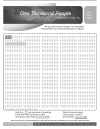Strategies to help patients understand risks
- PMID: 14512489
- PMCID: PMC200818
- DOI: 10.1136/bmj.327.7417.745
Strategies to help patients understand risks
Abstract
Explaining risks to patients in an effective way is an essential part of ensuring that consent is “informed.” A consultant in risk communication discusses the strategies that can help doctors to communicate risks clearly, and thereby also build closer relationships with their patients
Figures





References
-
- Paling J. Up to your armpits in alligators? How to sort to what risks are worth worrying about. Gainesville, FL: Risk Communication and Environmental Institute, 1997.
-
- Stalling P. New tool for presenting risk in obstetrics and gynecology. Obstet Gynecol 2001;98: 345-9. - PubMed
-
- Lloyd A, Hayes P, Bell RF, Naylor AR. The role of risk and benefit perception in informed consent for surgery. Med Decis Making 2001;21: 141-9. - PubMed
-
- Ropeik D, Clay G. Risk! A practical guide for deciding what's really safe and what's really dangerous in the world around you. New York: N Y Houghton Mifflin, 2002.
-
- Bennett P. Understanding responses to risk: some basic findings. In: Bennett P, Calman K. Risk communication and public health. Oxford: Oxford Medical Publications,1999: 3-19.
MeSH terms
LinkOut - more resources
Full Text Sources
Medical
